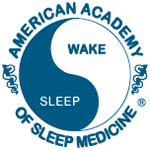Not getting enough deep sleep could raise the blood pressure in men, a new study reports. Findings showed that men who do not get enough slow-wave sleep are 80% more likely to develop high blood pressure.
The study was published in the August 29 online edition of American Heart Association’s journal, Hypertension. It gives further credence to other research that has associated sleep problems with a high risk of obesity and cardiovascular diseases such as hypertension.
The study involved a group of 784 men with an average age of 75. The men were part of another study called Outcomes of Sleep Disorders in Older Men. None of the subjects had high blood pressure in 2003-2005, at the start of the study. During the follow up in 2007-2009, researchers found that 243 men had high blood pressure. The men were then divided into four groups. The groups were ranked from the lowest amount of slow-wave sleep to the highest amount of slow-wave sleep.
Researchers found that after adjusting for age, race and body mass index (BMI) and other factors, the association between low slow-wave sleep and high blood pressure remained.
Dr. Susan Redline, one of the researchers involved in the study, told U.S. News and World Report that blood pressure usually drops during sleep. This mostly happens during slow-wave sleep.
If you are not getting enough deep sleep, your blood pressure could be higher during the day.
Photo By: Eric Schmuttenmaer
Photo By: Eric Schmuttenmaer











